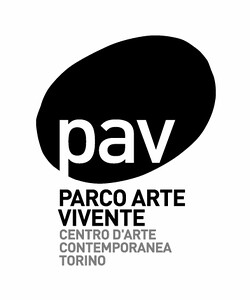Art and Nature Beyond the Wall
March 18–June 26, 2016
Via Giordano Bruno 31
10134 Turin
Italy
T +39 011 318 2235
Curated by Marco Scotini
Closely linked to the Earthrise exhibition dedicated to the Italian artistic scene in the 1970s, the PAV is continuing its investigations into the pioneers of the relationship between artistic practices and the natural environment, this time moving towards the East and tracing a constellation of complementary experiences generated under Socialism. EcologEAST is the first exhibition in Italy presenting non-official, avant-garde artistic research working with the environment and spread throughout Central Europe: from Poland to the former Czechoslovakia, from Romania to Hungary and the former Yugoslavia. The differences in context, primarily from an ideological point of view, make it difficult to make their approach comparable with that developed by western Earth workers and Land artists, over and well beyond the appearance of the strategies used.
At the start of the 1970s, the topic of the environment which emerged in full in the West, did not appear to have been stopped by the Iron Curtain. This is not because the crisis in nature stood, by its very statute, apart from the economy, society and politics and, therefore, would be self-explanatory. But, on the contrary, precisely because the origins of its deterioration lay fully within these factors, it is necessary to ask ourselves what it is then that unites both the East and the West under this aspect. One of the fathers of political ecology such as André Gorz responded, instinctively, that the problem lies in both cases, in seeing “growth” as the answer to all ills.
In 1977, André Gorz wrote: “All those on the left who refuse to tackle the problem of equity without growth, demonstrate the fact that, for them, socialism is nothing more than the continuation, using other means, of capitalist social relationships and culture, of the bourgeois way of life and consumer models.” Precisely because the error lies in having taken over the production methods of capitalism, without changing them, Gorz concluded: “Growth-oriented capitalism is dead. Growth-oriented socialism, which closely resembles it, reflects the distorted image of our past, not of our future.”
Post 1968 counter-culture, technological innovation and the ecology debate were at the heart of a new radical trend which, from the second half of the 1960s saw a series of artists, in different regional contexts, developing a multiplicity of ephemeral practices (performative and conceptual) as direct actions taking place, mainly, within the natural environments at the margins of the cities and recorded in photographic documents or as exposés of pollution through videos or postcards, graphic maps and visual cosmologies as in the case of Sikora, the recovery of local traditions and recourse to organic materials, irrigation systems and community associations such as that inaugurated by the OHO Group near Šempas, or urban demonstrations with the involvement of the public, as in the case of the TOK Group in Zagreb.
The importance of these molecular actions lies in the reversed relationship between visibility and invisibility that they presented, as they also did with regard to the end of the humanist perspective that they pursued. The landscape was thus transformed almost imperceptibly, precisely because every hierarchy between humankind and nature is destroyed. But, above all, the underlying role of these actions was to provide the opportunity to indirectly criticize the political themes of the moment using, however, the concept of the environmental crisis which, as such, appeared to be detached from any expressly ideological implications. But, on the contrary, its aim was exactly that of promoting a political solution.
Works of Peter Bartoš (Slovakia), Imre Bukta (Hungary), Stano Filko (Slovakia), Ana Lupas (Romania), Teresa Murak (Poland), OHO Group (Slovenia), Pécs Workshop (Hungary), Zorka Ságlová (Czech Republic), Rudolf Sikora (Slovakia), Petr Štembera (Czech Republic), TOK Group (Croatia), Jiří Valoch (Czech Republic)
Realized with the support of Compagnia San Paolo.
Thanks to Marinko Sudac Collection, Zagreb; Museum of Modern Art in Warsaw; MSU Zagreb; AMT Project Bratislava; P420 Bologna.



